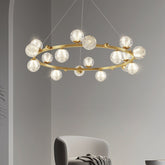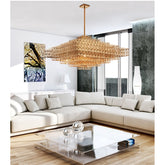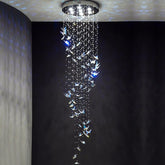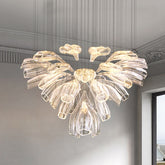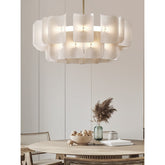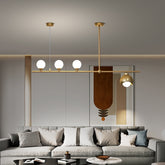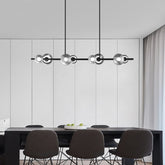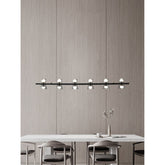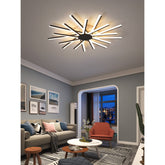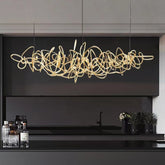What does "Luxury" actually mean in Home Decoration: A Breakdown of Craft, Design, and Detail
The word luxury is one of the most used—and misused—terms in the world of home decoration. Often associated with extravagance, high price tags, or flashy aesthetics, luxury has become a catchall marketing term that can mean everything and nothing at once. But when we strip away the buzzwords and trends, what does luxury truly mean in the context of home design?
At its core, luxury is not just about expense or exclusivity. It’s about quality, intentionality, and refinement. True luxury in home decoration isn’t found in gold-plated accents or oversized chandeliers—it’s found in craftsmanship that stands the test of time, in design that flows effortlessly, and in the subtle details that speak to thoughtful curation rather than excess.
The Evolution of Luxury in Home Design
First of all, it's important that we understand the evolution of the subject. Luxury in home design has undergone a significant transformation over the centuries. Historically, luxury was synonymous with opulence—grand palaces adorned with gilded ceilings, marble columns, and vast tapestries were designed to reflect power, wealth, and status. In these early expressions, the more extravagant the space, the more luxurious it was considered to be.
Fast forward to the modern era, and luxury has taken on a new face. While quality and beauty remain central, today's luxury is less about showcasing wealth and more about curating comfort, individuality, and craftsmanship. From expansive estates to sleek urban penthouses, the emphasis has shifted from sheer opulence to intentionality.
Modern luxury is defined by how a space serves its inhabitants, not just how it looks. It embraces the idea that true richness lies in how a home feels—how it functions seamlessly, how materials age gracefully, and how every element tells a story. This evolution marks a move away from decorative excess and toward thoughtful design choices that prioritize meaning over mere magnificence.
Craftsmanship: The Invisible Backbone of Luxury
Beneath every truly luxurious home lies an often-overlooked element: exceptional craftsmanship. It’s not always what catches your eye at first glance, but it’s what gives a space its soul—and staying power.
Luxury design places quality over quantity. It favors a single, beautifully handcrafted chair over a room full of mass-produced furniture. It celebrates the labor, precision, and artistry behind the materials we touch every day. When you run your hand over a perfectly smooth walnut countertop or step barefoot onto hand-laid mosaic tile, you’re experiencing luxury not through sight, but through feel.
Consider the timeless elegance of hand-carved woodwork, the bespoke charm of artisan-made tiles, or the quiet confidence of custom cabinetry built by master woodworkers. These elements may not scream for attention, but they whisper of care, tradition, and excellence. They are what set a luxurious home apart from one that simply looks expensive.
More than aesthetics, expert craftsmanship also enhances the longevity of a space. A well-constructed piece of furniture or a meticulously installed floor won’t just last—it will grow more beautiful with time. This durability and integrity are the essence of true luxury: design that endures, not just impresses.
Design Philosophy: Timelessness vs Trendiness
Fast furniture, color-of-the-year palettes, and viral decor moments may dominate for a season, but they rarely stand the test of time. True luxury, by contrast, is rooted in timelessness. It’s not dictated by what's fashionable now, but by what continues to feel relevant, elegant, and functional for years—sometimes decades—to come.
At the heart of luxurious design lies a mastery of balance, proportion, and flow. These aren’t just buzzwords—they’re foundational principles that guide how a space feels. Balance refers to the visual and physical equilibrium of a room. Proportion speaks to the scale of furnishings and architectural elements in relation to the space. Flow ensures that rooms connect with each other, both aesthetically and functionally, allowing for natural movement and cohesion.
Creating such harmony doesn’t happen by accident. This is where the role of interior architects and design visionaries becomes essential. These professionals don’t simply choose finishes or furniture; they think holistically about how every element interacts—light, material, structure, and spatial rhythm. Their expertise ensures that a space not only looks beautiful but lives beautifully.
They also understand restraint. In luxury design, knowing what not to add is often just as important as knowing what to include. A timeless space doesn’t rely on excess; instead, it’s shaped by intention. Every item has a reason to exist—whether it’s a sculptural chair that doubles as art, or a custom bookshelf that frames a room with quiet elegance.
Common Misconceptions About Luxury Decor
In interior design, few words are as misunderstood as luxury. It’s often equated with excess, extravagance, or high price tags—but these assumptions can distort what luxury truly means in the context of a well-designed home. Let’s unpack two of the most persistent myths:
Myth 1: Luxury Means Expensive
One of the most common misconceptions is that luxury is defined by cost. While high-end materials and custom pieces can certainly be expensive, price alone doesn’t create a luxurious experience. In fact, many so-called “luxury” items are mass-produced and marketed to appear upscale, yet they lack the craftsmanship or intention that defines true luxury.
Real luxury is about value, not just cost. A handmade ceramic bowl may offer more aesthetic and emotional richness than a factory-made item that costs three times as much. A thoughtfully designed room with modest materials can feel far more luxurious than a larger, flashier space filled with trendy furnishings.
Luxury is about investing in quality, comfort, and longevity—and sometimes, the most luxurious element is the care and intention behind the design, not the price tag attached to it.
Myth 2: Luxury Must Be Extravagant or Ornate
Another myth is that luxury equals visual opulence—gilded mirrors, oversized chandeliers, elaborate moldings. While these elements can certainly be part of a luxurious aesthetic, they’re not requirements. In fact, today’s luxury often leans toward restraint, minimalism, and understatement.
A luxurious space doesn’t need to be filled; it needs to be curated. It’s about allowing materials to speak for themselves, using clean lines, natural textures, and open space to evoke calm and sophistication. A soft cashmere throw draped over a linen sofa, or a perfectly integrated lighting system, can exude more luxury than the most ornate décor.
In other words, luxury is less about being grand, and more about being considered. It’s not about how much you put into a space—it’s about what you put in, why you chose it, and how it makes you feel.
Attention to Detail: Where Luxury Truly Lives
Luxury isn’t always loud. In fact, it often whispers. It resides in the subtle, intentional details—the ones that don’t shout for attention but elevate a space in ways that are deeply felt, even if not immediately noticed.
Consider the trim work around a doorway, the feel of a perfectly weighted cabinet handle, or the precision of joinery in custom furniture. These elements might seem small, but they are the signatures of a space crafted with care. In luxury interiors, no decision is incidental—every piece of hardware, every finish, every edge and seam has been thoughtfully chosen and expertly executed.
Beyond finishes and fixtures, texture and layering play a vital role in creating a rich, inviting environment. A room might feature a combination of natural wood, soft wool textiles, brushed metal, and matte stone—each material offering its own tactile and visual quality. These layers work together to create depth and sophistication, providing visual interest without relying on excessive decoration.
Lighting is another powerful tool in luxury design. It’s not just about illuminating a room; it’s about sculpting it. Soft ambient lighting, strategically placed accent lights, and well-designed natural light sources all contribute to mood and ambiance. A well-lit space feels alive and responsive, changing throughout the day to suit different activities and emotions.
At its core, luxury is a sensory experience. It’s how a room feels—the quiet hush of a sound-dampened hallway, the plush give of a handwoven rug underfoot, the scent of aged wood or fresh linen, the comfort of knowing that every element was chosen with purpose. These details don’t just beautify a space—they enrich daily life.
When done well, these subtleties become the heartbeat of a home. They’re what you notice in the quiet moments—the smooth pull of a drawer, the glow of an uplight at dusk, the way sunlight falls perfectly across a stone surface. This is where true luxury lives: not in excess, but in the experience of every finely crafted detail.












































































































